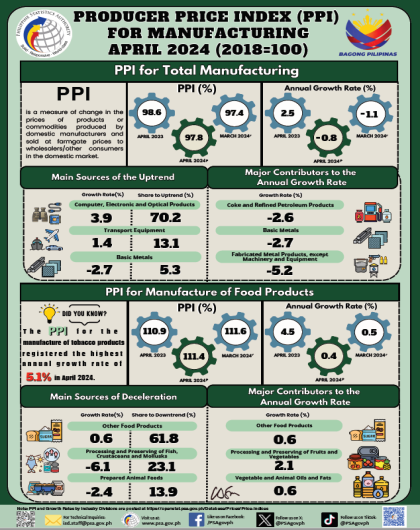Producer Price Index for Manufacturing (2018=100) April 2024
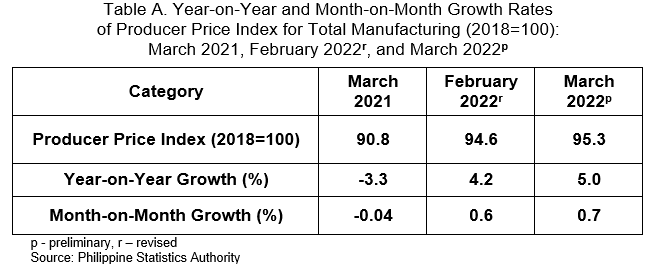
Year-on-Year
The Producer Price Index (PPI) for manufacturing remained at an upward trend posting a faster annual rate of 5.0 percent in March 2022 compared with the increase of 4.2 percent last February 2022. In March 2021, the PPI posted a downturn with an annual rate of -3.3 percent. (Table A)
The upturn in the PPI in March 2022 can be attributed to the annual expansions in the indices of 18 industry divisions led by manufacture of coke and refined petroleum products which posted an annual increment of 17.9 percent.
On the other hand, manufacture of wood, bamboo, cane, rattan articles and related products, with an annual decline of -6.6 percent, led the four industry divisions that recorded decreases in their annual growth rates. (Tables A-1 and 1)
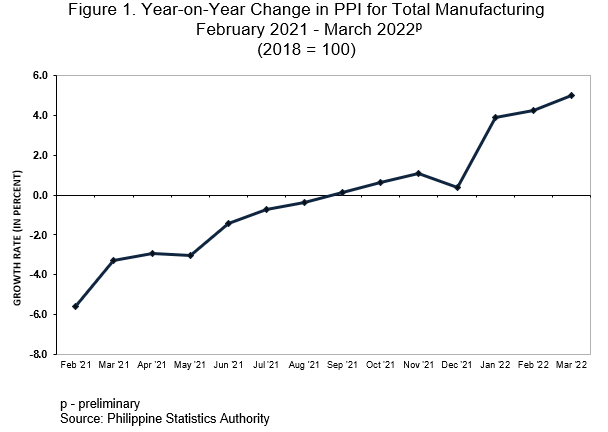
Month-on-Month
Month-on-month, the PPI for manufacturing continued to increase exhibiting a monthly growth rate of 0.7 percent in March 2022. This upturn was slightly faster compared to the 0.6 percent increment in February 2022. In March 2021, the PPI posted a monthly decrease of -0.04 percent. (Table A)
Sixteen (16) industry divisions recorded positive monthly growth rates in March 2022 led by manufacture of coke and refined petroleum products with a monthly increment of 2.9 percent. On the contrary, the PPI of four industry divisions recorded monthly decrements, with other manufacturing and repair and installation of machinery and equipment posting the highest monthly drop at -0.5 percent. Printing and reproduction of recorded media, and manufacture of leather and related products, including footwear had zero monthly growth rates. (Tables A-2 and 1)
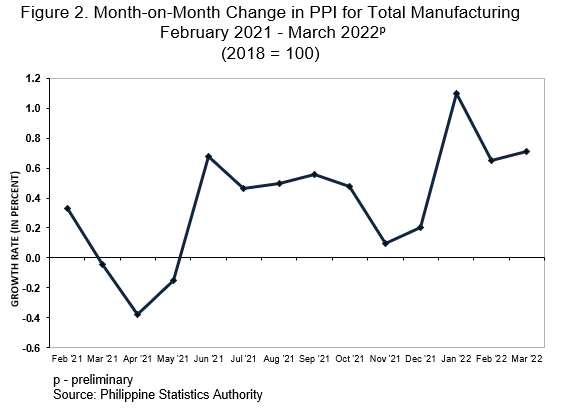
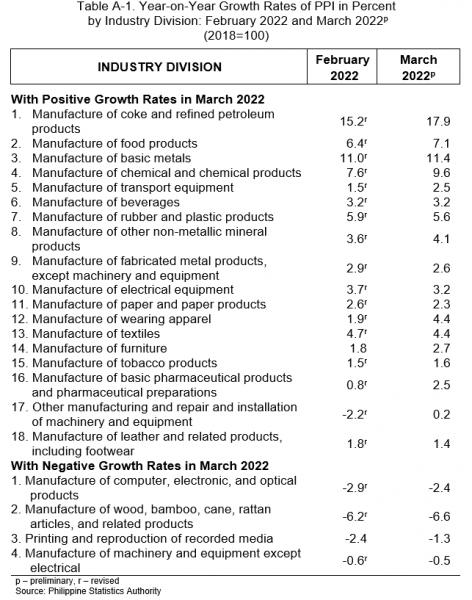
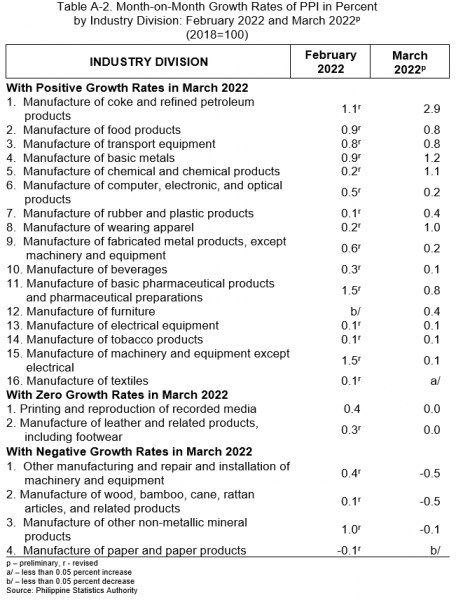
DENNIS S. MAPA, Ph.D.
Undersecretary
National Statistician and Civil Registrar General
- Introduction
- Method of Index Computation
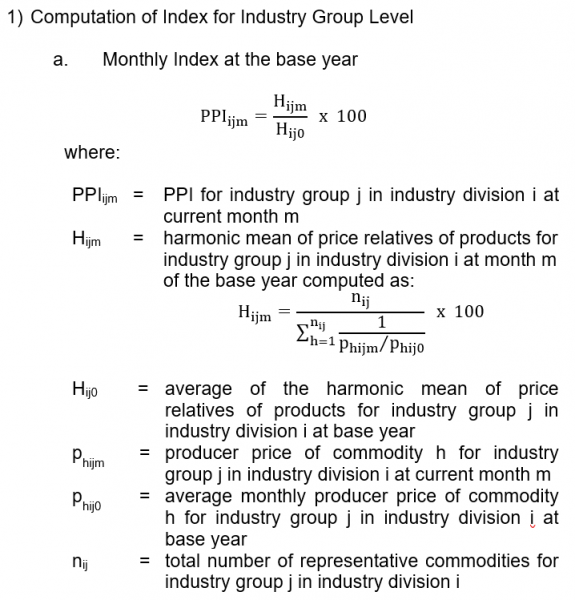
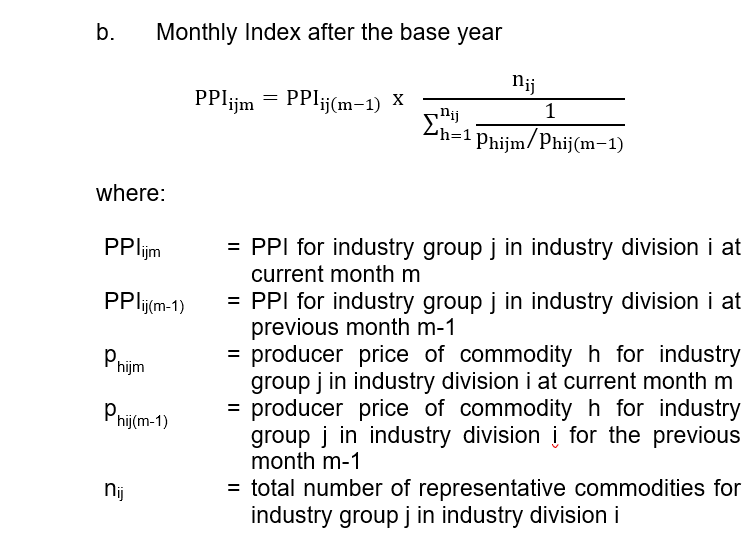

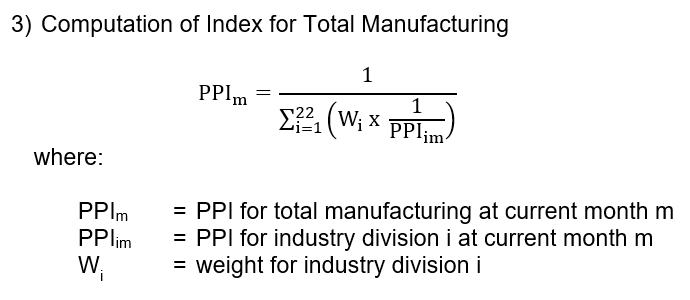
Note: A link factor has been used to adjust weight effects to measure the correct price change.
- Computation of Growth Rates
Year-on-year growth rates are computed by dividing the current month’s index by the index of the same month of the previous year less 1.
Month-on-month growth rates are computed by dividing the current month’s index by the previous month’s index less 1.
- Imputation and Revision
Imputation is done for sample establishments that are in operation during the reference period but with no received response during the release date. Results are revised accordingly when the actual data are received, and these revisions are reflected in the next release.
- Industry Coverage
Starting with the January 2013 reference month, PPI utilizes the 2009 Philippine Standard Industrial Classification (PSIC) to classify sectors and industries. Selected industry groups of the 2009 PSIC were grouped to form the 22 industry divisions of the 2021 PPS. These are presented in the table below.
|
2009 PSIC CODE |
INDUSTRY DESCRIPTION |
|---|---|
|
C10 |
Manufacture of food products * |
|
C11 |
Manufacture of beverages |
|
C12 |
Manufacture of tobacco products |
|
C13 |
Manufacture of Textiles |
|
C14 |
Manufacture of wearing apparel |
|
C15 |
Manufacture of leather and related products, including footwear |
|
C16 |
Manufacture of wood, bamboo, cane, rattan articles, and related products products* |
|
C17 |
Manufacture of paper and paper products |
|
C18 |
Printing and reproduction of recorded media |
|
C19 |
Manufacture of coke and refined petroleum products |
|
C20 |
Manufacture of chemical and chemical products* |
|
C21 |
Manufacture of basic pharmaceutical products and pharmaceutical preparations |
|
C22 |
Manufacture of rubber and plastic products* |
|
C23 |
Manufacture of other non-metallic mineral products* |
|
C24 |
Manufacture of basic metals* |
|
C25 |
Manufacture of fabricated metal products, except machinery and equipment* |
|
C26 |
Manufacture of computer, electronic, and optical products* |
|
C27 |
Manufacture of electrical equipment* |
|
C28 |
Manufacture of machinery and equipment except electrical* |
|
C29, C30 |
Manufacture of transport equipment* |
| C31 | Manufacture of furniture |
| C32, C33 | Other manufacturing |
* Industry divisions categorized further into industry groups
See more at the Producer Price Survey (PPS) main page.

